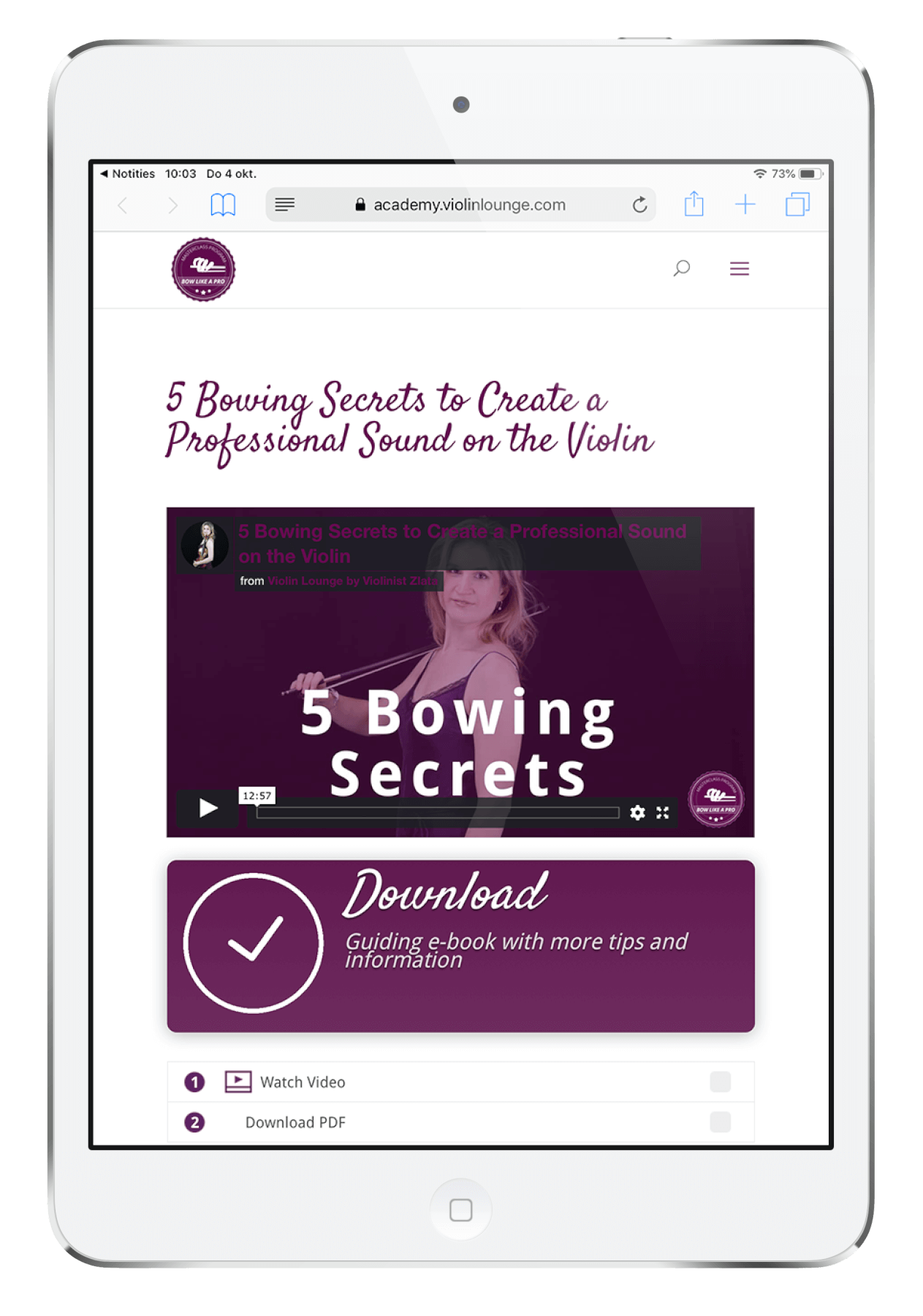How to Bow Straight on the Violin (without looking)
A lot of violin players think improving their sound quality lies in advanced techniques, while the solution for most of them lies in the basics
Bowing straight means that your bow and string are in a ninety degree angle throughout the whole bow stroke
You can ’round’ this a bit at the tip, but in general your bow must be straight during the whole bow stroke.
Many violin players who have years of experience, think they bow straight, but in fact they don’t
When you’re not bowing straight, your bow moves over various contact points and you are making different types of sound without wanting that. In this way you don’t have control over your sound quality. Also you can get weird noises like peeps, whistles, scratches or no sound at all.
You can check if you’re bowing straight by playing in front of a mirror
If you’re not, you can correct it by playing on open strings with whole bow. Do this from the extreme frog to the extreme tip and on each string. The position of your arm and the feeling will be different for every string. When you practice this for eight bow strokes a string right in the beginning of your practice session, you can solve many problems in tone production. It only costs you a couple of minutes.
Don’t feel like you’re ‘starting all over again’ by bowing on open strings: this is something even conservatory students have to do to perfect their basic technique.
Improve your violin bowing technique
Enjoy my FREE mini Masterclass 5 Bowing Secrets to Create a Professional Sound on the Violin

Hi! I'm Zlata
Classical violinist helping you overcome technical struggles and play with feeling by improving your bow technique.
A couple of tips to bow straight:
When bowing your upper arm should be almost still
Only when bowing to the frog you slightly move it to the front and back at the bow change.
Don’t bow with just your lower arm, but mainly move your wrist and fingers
This will not only make it easier to bow straight, but will smoothen your bow changes and improve your sound quality in general. You might want to do the Thibaud exercise to practice the movement in your fingers and your bow control in general.
Your bow hold should be relaxed and flexible
Don’t think your bow hold just as to look like it’s correct. The way you move is so much more important than the way you hold it. Different violinists hold their bows in different ways, but the fluency and control is something you see in all great players. Your bow hand (fingers and wrist) should move along the straight movement of the bow maintaining the resonance in your violin and bow and smoothening the bow changes.
I’d love to teach more in my free videos
Check out my free beginner course to polish up your basics, like your bow hold and movement. Even for people who play for years, this course has been helpful. Also check out my free video lessons about bowing technique.


Thank you … So much
Happy to help, Meike!
Thank you for the tips. It was very encouraging to read even advanced students have to practice the basics. Looking in the mirror doesn’t help me because it is a distraction to see how poorly I am bowing and then everything is kind of “opposite” in the mirror. But it is amazing to see how what looks very straight while staring at the bridge and finger board intervals, is actually very much an arc when looking in the mirror. The playing on single open strings is a good exercise for bowing straight and practicing playing just one string at a time.